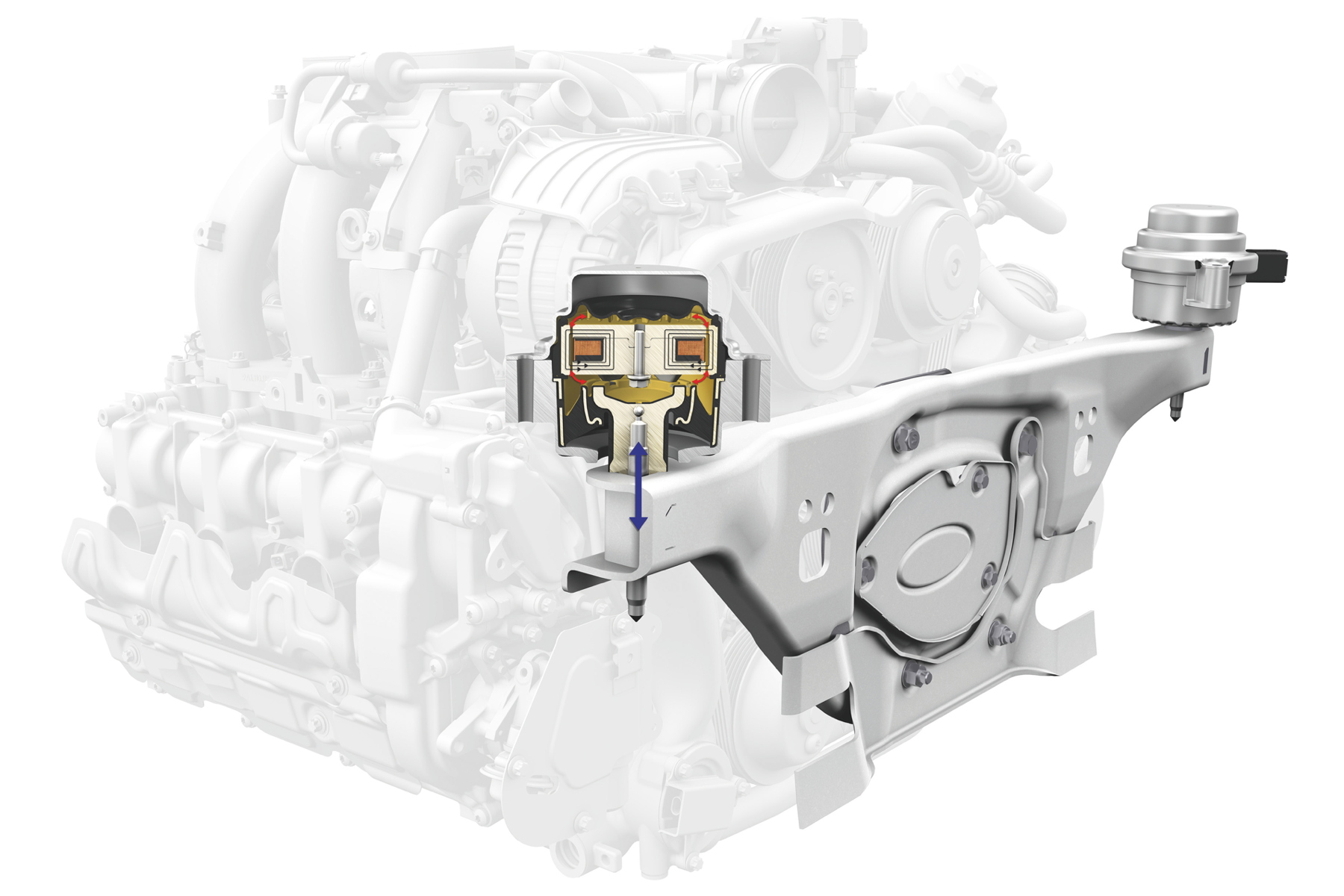Technology explained: Porsche Active Drivetrain Mounts
The Porsche 911 was designed to be driven “on an African safari or at Le Mans, to the theatre or through New York City traffic” according to Ferry Porsche. However, unlike building a racing car, the construction process on a road car is full of compromises, with one such concession being the balance between stiffness and comfort.
Make a road car too stiff, and the ride will become harsh and unforgiving. Conversely, if the ride is too soft then the handling response will be decreased.
While he conceded that “there is no such thing as the perfect car,” he pushed his company to do “everything in our power to approach this ideal.” In 2010, Porsche was able to satisfy this demand with two rear mounts that stiffened at high rpm to provide responsive handling, before turning more flexible at low engine speeds, providing better comfort during normal driving.
To achieve this duality, the Porsche Active Drivetrain Mounts are filled with magnetorheological fluid containing microscopic iron particles. Each mount contains two chambers, with a circular slot that allows the fluid to pass between the top and bottom chambers. At the centre is a doughnut-shaped electromagnet, which is used to control the fluid’s viscosity.
At low engine speeds, the fluid flows freely to provide a more comfortable driving experience. However, the voltage that reaches the electromagnetic is controlled by the ECU, with the map based predominantly on engine speed.
As the engine rpm increases, so does the electromagnet’s voltage, creating a stronger magnetic field. This increases the chains of aligned iron particles, decreasing the fluid’s viscosity. Eventually, these chains render the mount solid.
While this decreases ride quality, it increases stiffness at the rear end of the car, providing improved responsiveness when cornering. PADM is part of the Sport Chrono package, allowing the driver to activate the system using the Sport Plus button.

Comments (1)